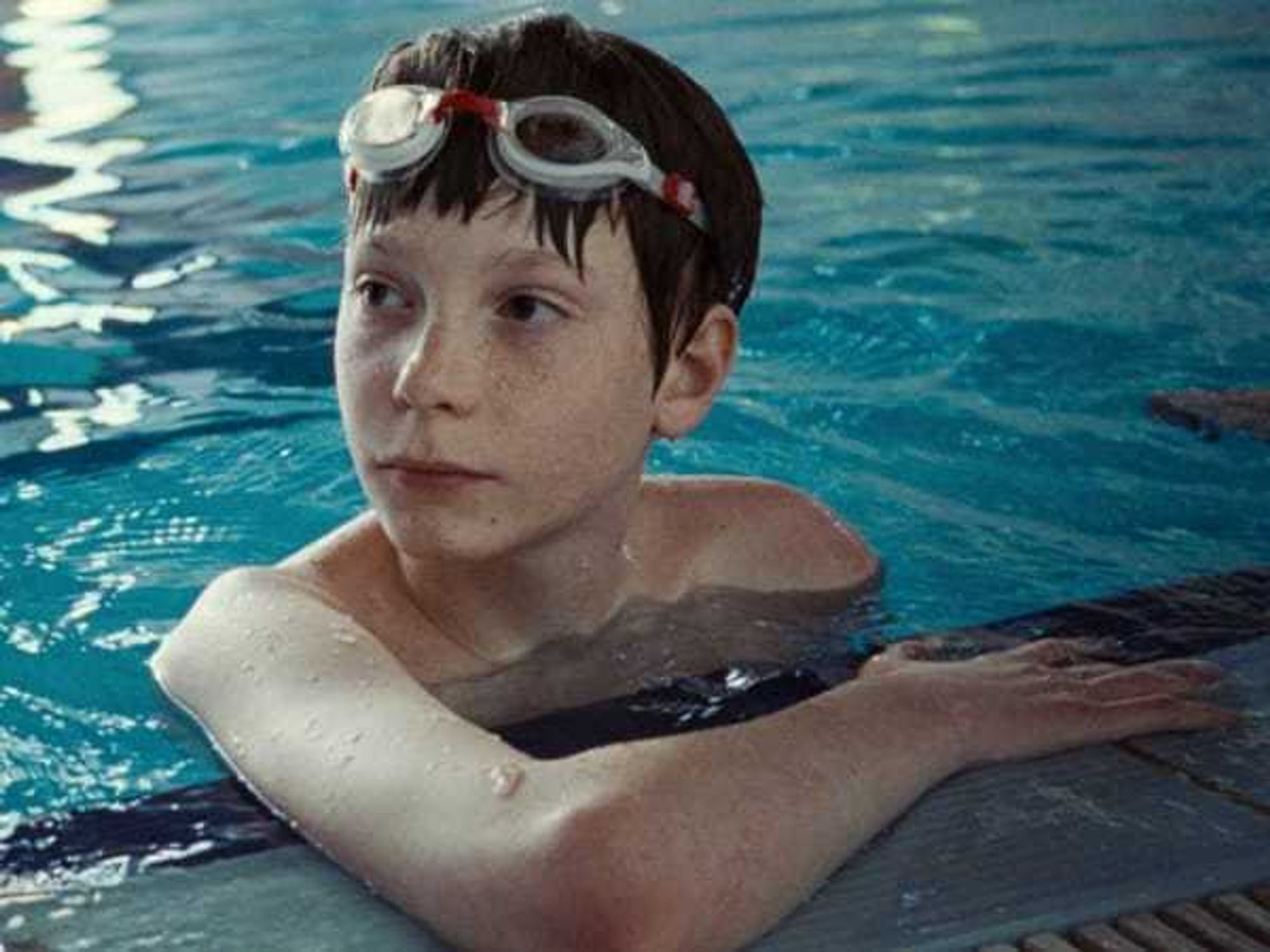royal portraits
Mega-celebrity photographer of Beyoncé's all-time favorite portrait holds court in Houston to honor Queen Bey
Only a select few humans — ever — have been photographed as often as pop culture’s undisputed queen, Beyoncé, over her illustrious, 26-year career. Even at her young age, Houston’s queen possesses a singular trait that elevates her above even the most apex celebrities: immortality.
Just how do the ultra-famous unlock the loftiest achievement of immortality? For many, it’s often through a single, transcendent photograph, which can transform a performer into an icon — and rocket a mere mortal into immortal status. And few photographers on the planet can bestow immortality on the globally famous like A-list artisan Markus Klinko.
To celebrate Beyoncé’s Renaissance World Tour homecoming — and his now legendary photos of her over the years — Klinko will meet fans from 1 pm to 3 pm Saturday, September 23 at Tootsies for a showcase of some of his most famed works — including the ultra-rare Beyoncé “Diamond Dust” series, on view at Nicole Longnecker Gallery.
A statuesque, towering presence (he’s six-foot-four) with chiseled features and a flair for fashion, the Swiss-born Klinko looks every part a celeb himself. That star quality has no doubt helped him break the ice when photographing superstars like our Beyoncé, David Bowie, Lady Gaga, Kim Kardashian, Jennifer Lopez, Will Smith, Britney Spears, Mariah Carey, Kanye West, Anne Hathaway, Kate Winslet, Naomi Campbell, and Iman — to name a few. Not a bad resume for a former professional classical harp soloist who — sort of amazingly — only fell into photography after a hand injury (more on that later).
Before she became a one-word brand, Beyoncé Knowles was just 22 when she experienced Klinko’s wizardry firsthand in 2003. Already drawing It Girl attention as a member of Destiny’s Child, the young Houstonian had met Klinko during a Destiny’s Child photo shoot for Vibe magazine in 2000. With his trademark, sixth-sense for superstardom, Klinko pointed to Beyoncé while she was lounging with the group and told her mother, Tina Knowles, “Her, she’s going to be huge.” Tina’s response: “We know.”
Three years later, Sony reunited Beyoncé and Klinko to shoot the cover of Dangerously in Love, Beyoncé’s now legendary 2003 debut solo album. The match, now, seems predestined: both Beyoncé and Knowles were in the early stages of their careers. Beyoncé and Klinko vibed immediately, and in a simple snap of his Fuji camera, Klinko shot the stunning and shimmering photo that Queen Bey recently told French newspaper Le Figaro is her most favorite of any portrait taken of her.
Staying true to his organic, in-the-moment approach, Klinko flawlessly captured Beyoncé’s effortless pose in her now-famed diamond top and created one of music’s most iconic celebrity photos and yes, helped cement Beyoncé’s immortal status. And it only cost him his pants. (More on that later, too.)
CultureMap caught up with Klinko ahead of his Houston appearance and fresh off the opening of his latest installation: His celebrity images are on display at the legendary Westgate Las Vegas Resort & Casino in, naturally, the vaunted Elvis Presley Suite. Perfect timing, then, for Klinko to star as a cover model in the familiar Tootsies window displays.
CultureMap: Congratulations on landing the Tootsies window display. It looks gorgeous.
Markus Klinko: Oh yeah, it’s spectacular, isn’t it?
CM: Quite! So, what’s it like seeing yourself as one of the main features of an exhibit — as opposed to being behind the camera?
MK: You know, I’ve never been in the window of a major fashion department store, so this is pretty fun.
CM: Never in the window, but you’ve certainly been the focal point of attention as an acclaimed harpist.
MK: Yes, I started my life on the ‘other’ side, and as you say, as a classical concert harpist. I was signed to EMI Classics and represented by Colombia Artists and traveling around the world making recordings. I was on television very often and on magazine covers and all that throughout my 20s and early 30s — everything from Italian Vogue and Vanity Fair and Harper’s Bazaar and GQ and all those fashion magazines for which I later worked as a photographer. So it’s not completely. new. But this is sort of a different twist.
CM: You clearly had an understanding of being in the spotlight, and the butterflies-in-the-stomach pressure to put on a great performance and give of yourself to an audience. Did that experience help you relate to your celebrity performer subjects in a way that just maybe a Mark Seliger or an Annie Leibovitz — not disparaging either — could not? Do you have a window into these performers’ worlds where they relate to you, and you to them?
MK: You know, that’s an amazing question and I’m glad you’re asking me this.
I switched from my classical music career, which was very successful at that time, to becoming a photographer at 33 under dramatic circumstances. It was tragic; basically a hand injury forced me to abandon my career at the height of my success in the summer of 1994.
I was forced to cancel recording sessions, touring engagements and all of that. I had no clue where my income would be coming from, so it was not like the happiest moment in my life. It was actually sort of a panic-stricken time.
CM: And then came the moment.
MK: Yes, I had this epiphany that I will become a fashion photographer, actually had no intention at all to ever become a celebrity photographer. In the beginning of my photo career, I was 100-percent interested only in shooting models — mainly female models to be honest. I would have liked to be a Playboy magazine photographer or something.
So in other words, I just wanted to have fun. It was the last thought on my mind to help other musicians succeed.
CM: You almost seem like you were dragged into fashion and celebrity photography.
MK: A few years into my photo career, around 1999, I was still completely focused on shooting models, models, models. I wasconfronted with proposals from record labels and magazines to shoot covers for them. And I distinctly remember telling my agent at the time that I was not interested and that why would I shoot musicians, when I could just shoot models who are more beautiful in general. And that was that.
CM: And how did that go over?
MK: At some point my agent picked up the phone and screamed at me and said, ‘Markus, you’re an idiot! We have record companies wanting to pay you $100,000 a day and you would rather shoot some girl.’ And I said, ‘Okay, fine, I’ll try it.’ My first record cover shoot was Vitamin C; at that moment she had the biggest hit of the year.
I asked my friends from Interview magazine to style it and she was lovely and I had no problem with it. But about a month later, I got up in the morning and I went to the gym. As I walked through the streets of New York, there were thousands and thousands of posters of Vitamin. I saw my image of Vitamin C a million times on the way to the gym. And I was like, ‘Hmm, that’s not so bad.’
A couple of months later, GQ called me from the UK and wanted me to shoot these different celebrities. And I told GQ — it was very funny — I said under one condition, I’ll shoot the celebrity you want me to shoot, but I want you to let me shoot some nude girl for the centerfold of GQ. And they just said, ‘Okay, whatever you want.’ So I invented the GQ Pin Up 2000 and for a whole year as a reward of shooting some British pop star girl for them — who I couldn’t care less but whatever, I did it. But then I shot Little Kim and Molly Sims and a bunch of really big models and supermodels.
CM: And then you shoot the world’s biggest supermodel, Iman, for her book, which leads to shooting a rock god David Bowie — her husband — for his now-famous album cover [Heathens, 2002] in 2001. Talk about a word-of-mouth reference.
MK: By that time, I was already inundated with. requests from labels. I shot nonstop for different labels and then Destiny’s Child, Beyoncé, Britney Spears, Mariah Carey, Mary J. Blige, Jennifer Lopez. That all came as a reaction basically to that first celebrity shoot with Vitamin C, and I guess just my style. The way I shot models was very different from what was in fashion at the time. I just sort of did my own thing. And that really appealed to major advertising record covers, iconic photo shoots, big comeback shoots for artists like Mariah. Mariah really needed a big comeback shoot in 2005 when she launched The Emancipation of Mimi.
CM: Let’s go back to that magical moment in 2003 when you shot perhaps the most legendary photo of Beyoncé ever.
MK: Sony music called me and they said, 'Beyonce from Destiny’s Child is going solo and she requested you shoot her album cover. Apparently, you had worked with her before for Destiny’s Child and she wanted to only work with you for this.'
So then, Sony Music organized a phone call between me, Beyoncé, the Sony team, and her mom Tina [Knowles] who was styling it. Beyoncé on the phone mentioned specifically my photograph of Leticia Costa, the French supermodel and actor in the "Spider Web" shot. And she said she really loved that photo — She called it the Diamond Spider or something. And she said she would love something like that, but smaller on her. And to be honest, I had no idea what that meant, but I was just like, 'Okay.'
Fast forward to a week later when the photo shoot actually happened and they arrived in the morning. I noticed that there was this diamond top and I grabbed it and I went up to Beyoncé. I said, 'This is exactly what you were talking about. We could do this.' And then she said, 'Oh yeah, I was thinking about it, but my mom has these skirts and I don’t wanna wear those because it reminds me of a prom and I don’t wanna look like a prom on my album cover.'
And I said, 'Yeah, of course not. Let’s do it with denim.' And then Beyonce said, 'No, we don’t have any, we didn’t bring any denim.'
CM: And then...?
MK: And so I said, 'Oh, don’t worry, maybe you’ll fit into mine.' And she said, 'Oh, really? Can I try them?' And so that’s the story.
CM: I’m guessing you had another pair handy?
MK: Oh, sure, I just grabbed another pair from upstairs I had. You know, back then and until now, my favorite pair of jeans are always DNG — Dolce & Gabbana.
CM: I love the story of how she returned them to you.
MK: She brought them back a couple months later. She had dry cleaned them and she packed them into some sort silk paper thing and a ribbon. She brought him back and said, 'Please don’t sell them on eBay, ever.' And she laughed.
I thought that was really sweet and I just took them and I put them somewhere. This is crazy, but I’m actually talking to Botswana Diamond Dealers to fill up a bathtub at the Vegas suite and to put those Beyoncé jeans into the bling bathtub as a joke. You know, almost as a shrine.
CM: Markus, it certainly seems to me that right when you looked through the viewer and fired off that exposure, she went from Beyoncé Knowles from Houston, Texas to the immoral global brand all in one second.
MK: You are right, yes. Absolutely she did. I had a jolt in my, in my whole body when that moment happened. And I told her that right then as soon as I clicked that shot. I said, 'We got the cover, you’ll see.' There's alternate shots of that, which are all beautiful, and some of them will be in Houston.
CM: It seems you predicted her future while announcing her to the world. Is that fair to say?
MK: Well, the way I see it is with that image, I sort of anticipated who Beyoncé was going to become. I think that my job that day was to take a young girl from Houston, Texas, a member of an R&B group, and present to the world who she will be. And she would have become that regardless of whatever I did photographically, because she’s such an enormous, enormously talented musician and performer and icon. She’s a great actress. But, my opportunity was to showcase to the world quickly and immediately who she will be. And so that’s what I’m proud of.
CM: You have shot countless celebrity portraits — many the most memorable of said celebrity, like Britney Spears. How does it feel to hear that your 2003 shot is Queen Bey’s favorite of all time?
MK: The fact that Beyoncé is probably the biggest celebrity in the world today, and having photographed the most famous photo — of the most famous celebrity — is an honor that I take with great humility. I’m not saying that to show off — I’m saying that to thank God for the opportunity. I am glad that Beyoncé loves the photo so much. I’m glad that the world recognizes it as her most famous photo: It's been said many, many times that it is the most recognizable Beyoncé photo. So I'm very honored that people feel that way about it.
CM: What do you remember of the Beyoncé then, and the Beyoncé you've worked with since for other projects?
MK: I remember Beyoncé and being around her, seeing her as an extremely kind, very humble, very normal person. I’ve never felt any sort of diva behavior from her. Beyoncé was just really, really nice and normal. And she’s extremely hardworking, obviously extremely talented, not just with music and singing and acting, but also in the process of collaboration of a visual product such as these photographs I’ve done with her. She’s a very, very good collaborator.
There are people who are very famous, especially actors who sometimes, in front of the still camera, feel awkward. Sometimes comedians and actors need the movement, the momentum, the storytelling, the words in order to showcase their brilliance and their talent.
Not everyone is able in a 2/50th of a second to express all of that, but Beyoncé certainly has that incredible ability and I think that’s innate and subconscious and subliminal. She just knows where the light is coming from and she knows how to position it all in the most phenomenal way. And I guess I subliminally know how to catch it. So it’s really one of those very, very easy collaborations.
CM: Speaking of collaborations, you are able to crystallize a pop icon’s entire era in a single exposure unlike perhaps anyone I’ve ever seen. Did you know that Beyoncé, Megan Thee Stallion, and Lizzo are all from Houston — they all grew up just a mere 30 minutes from each other.
MK: Wow, I did not know that.
CM: Yes, we’re home to three of the biggest female pop stars in the world. So I wonder: Megan Thee Stallion is truly in the midst of her moment. Is she someone you’d like to shoot next?
MK: Well, let me answer it this way...I hope that Megan reads your interview, because I absolutely love Megan and I would love to work with her — and they should call me. I love her.
CM: I would be remiss if I didn’t ask: What is your favorite Beyoncé song?
MK: Oh, I would say “Crazy In Love” is one of my favorites. There are obviously many, but I'm probably biased to that album. That's one of my proudest collaborations, so, of course, I’m biased. Can you blame me? [Laughs]
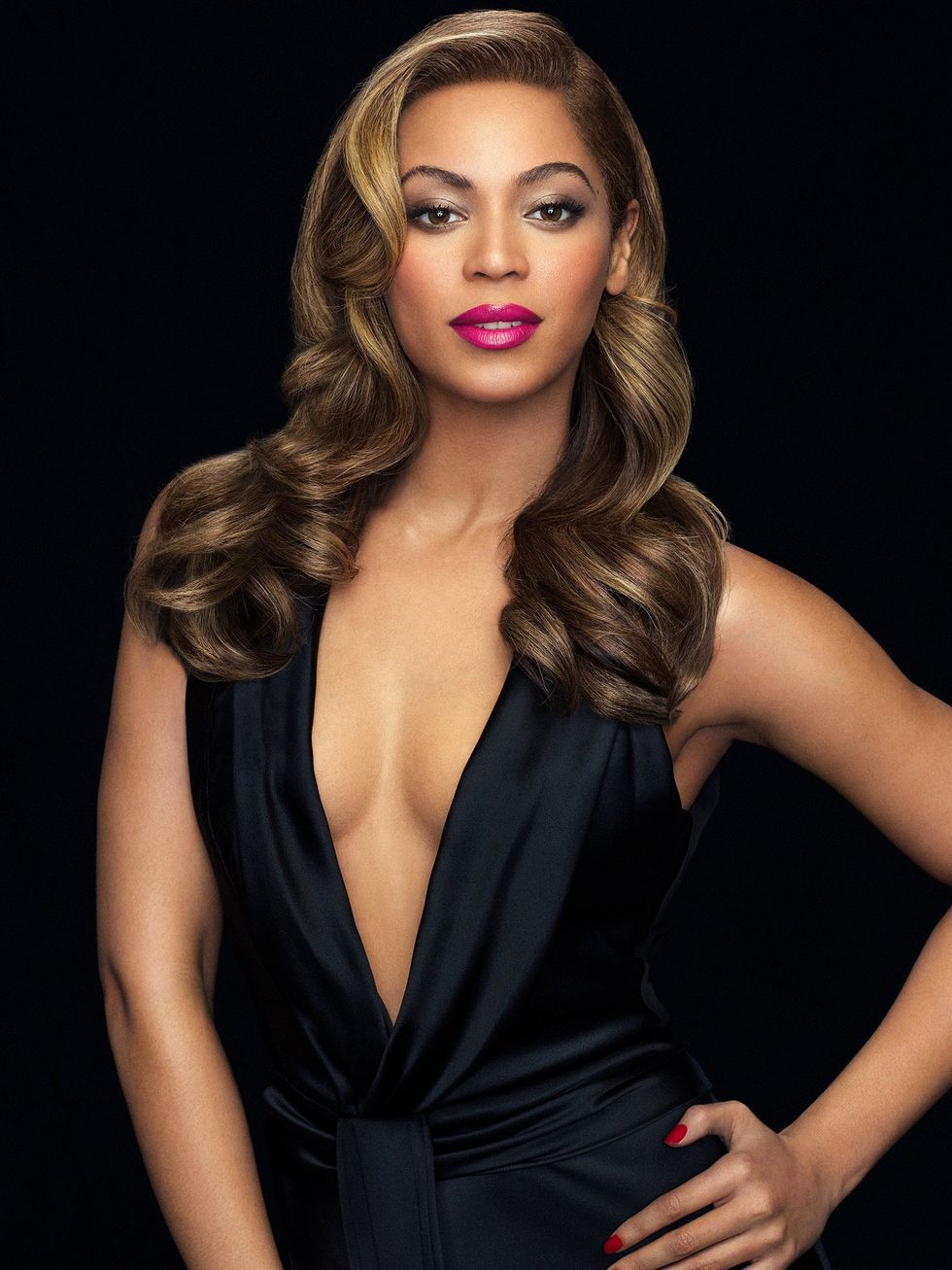
TKTK
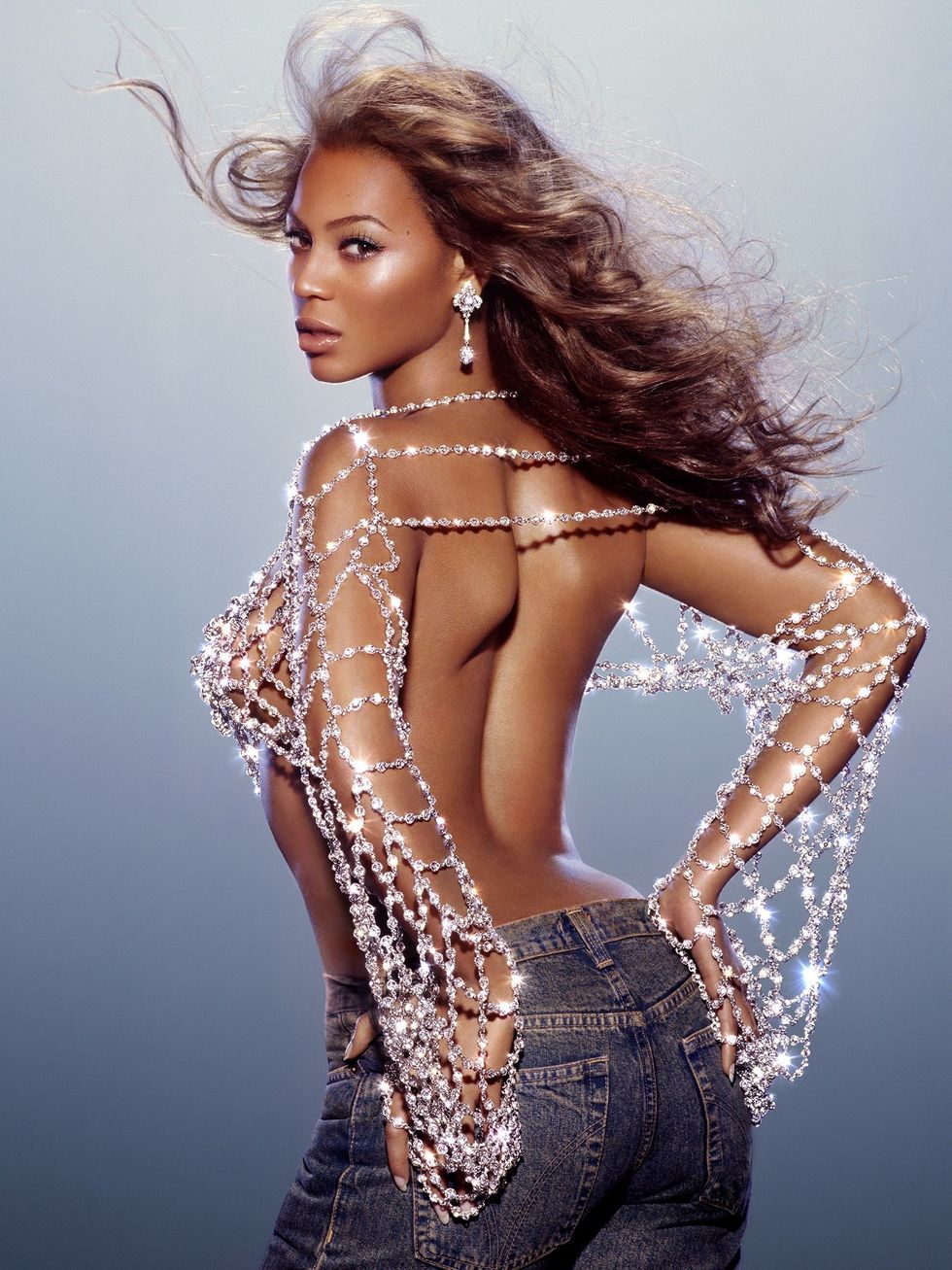
TKTK
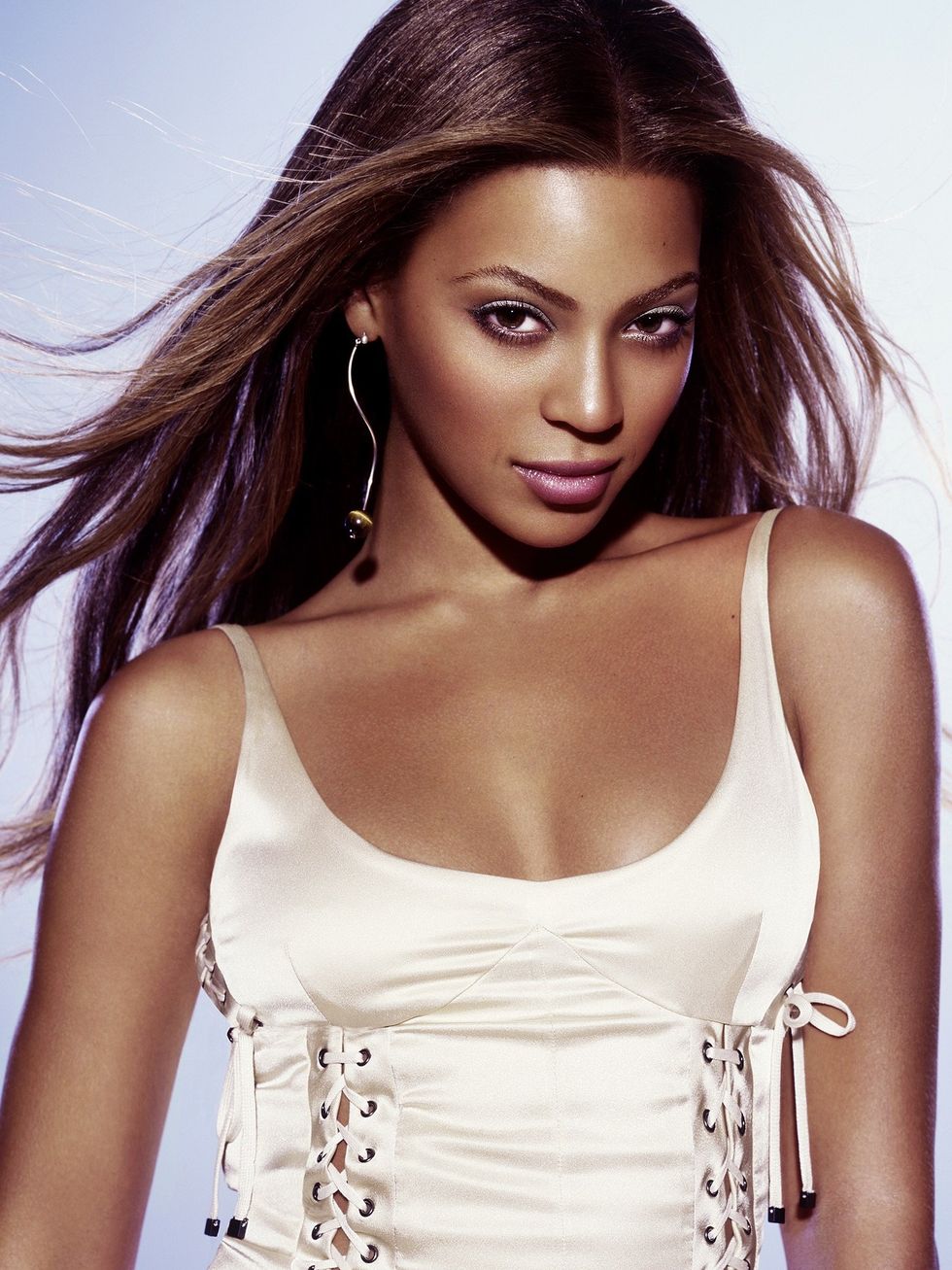
TKTK
Courtesy of Markus Klinko
Markus Klinko captured Beyoncé's favorite portrait in 2003 for her Dangerously in Love debut solo album.

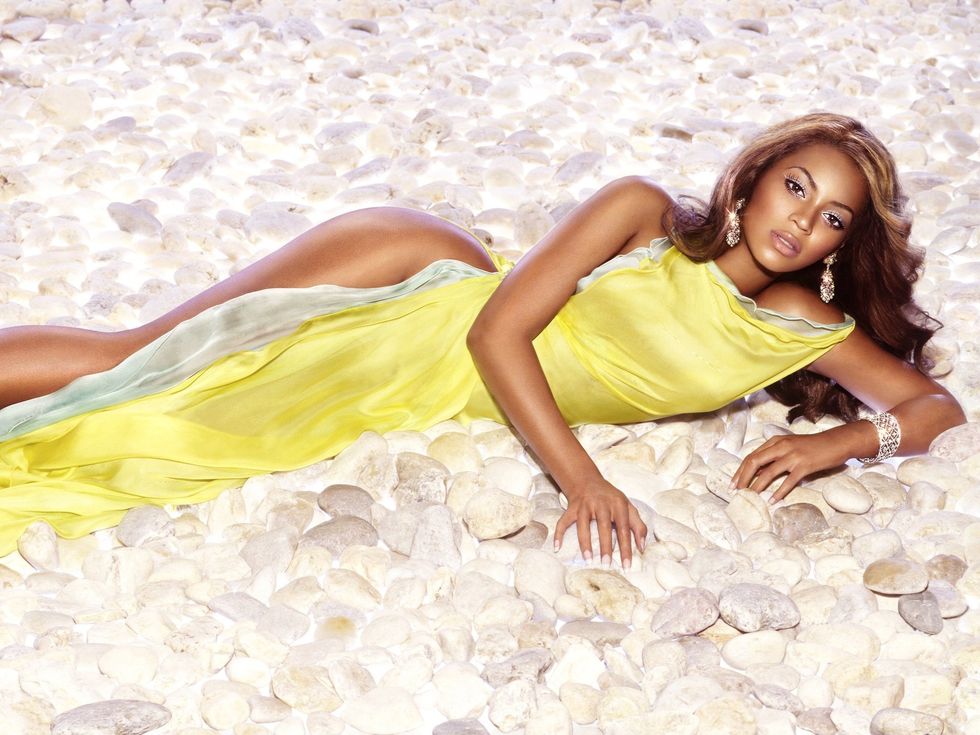
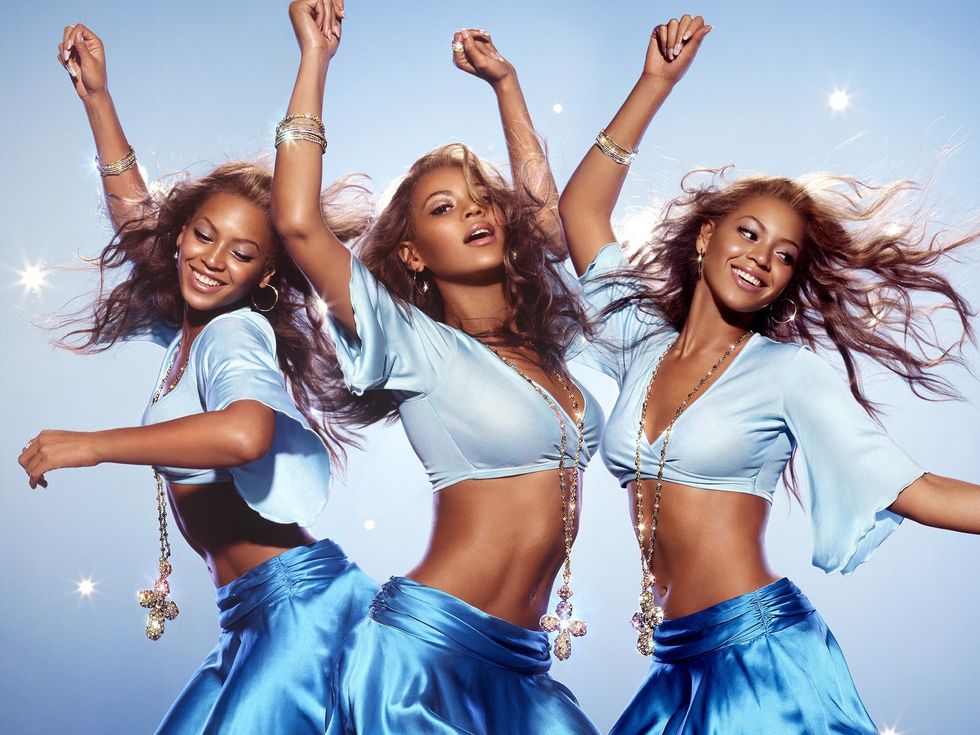
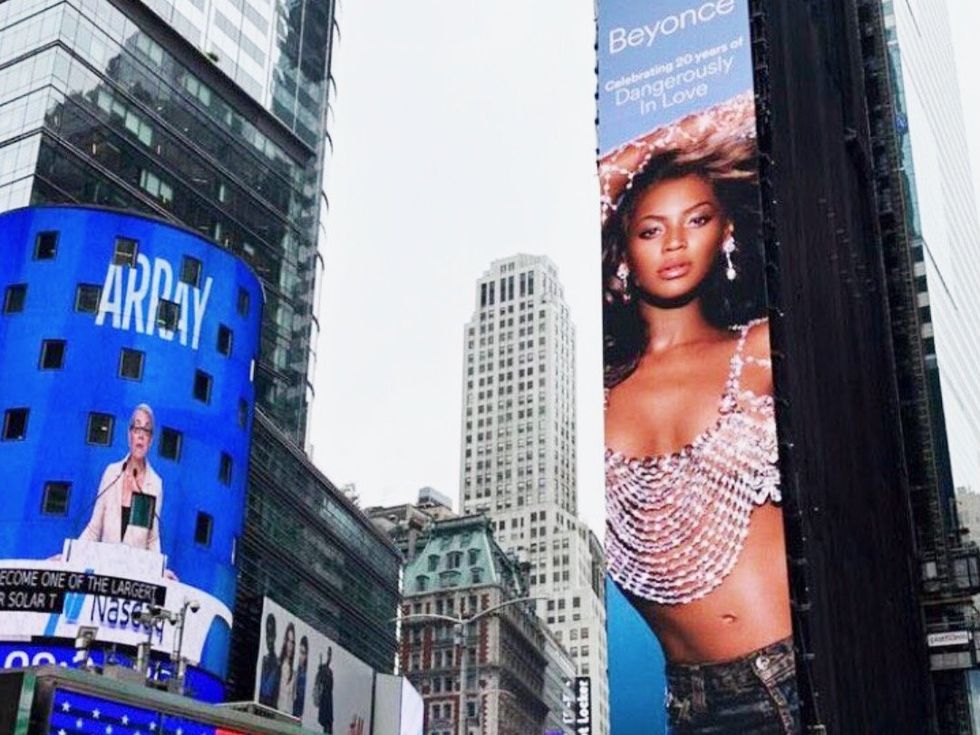
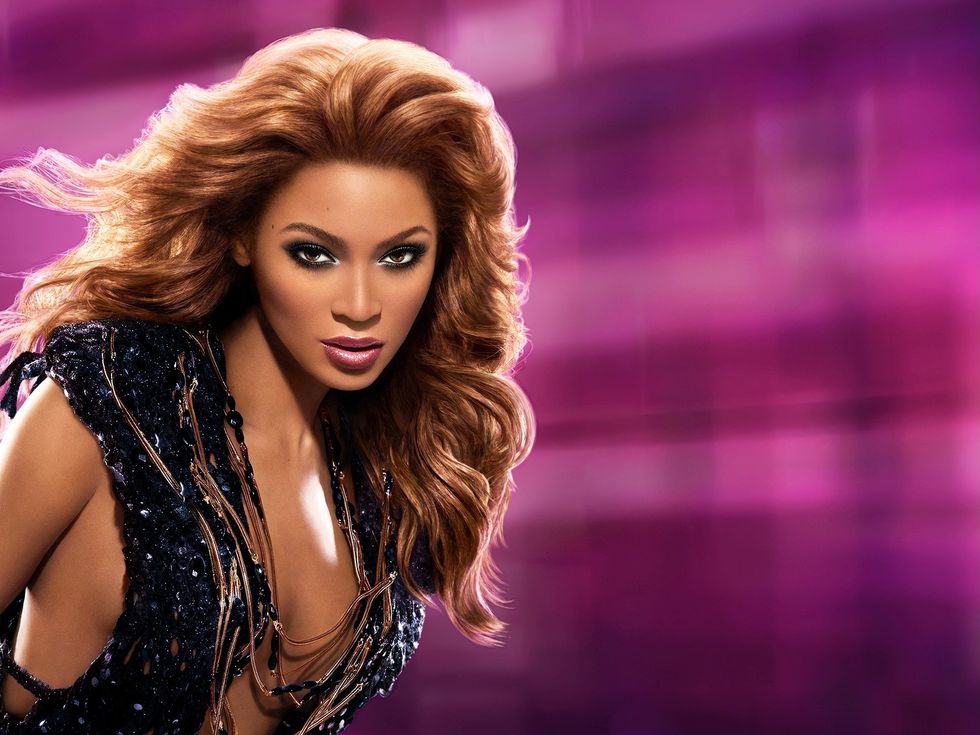
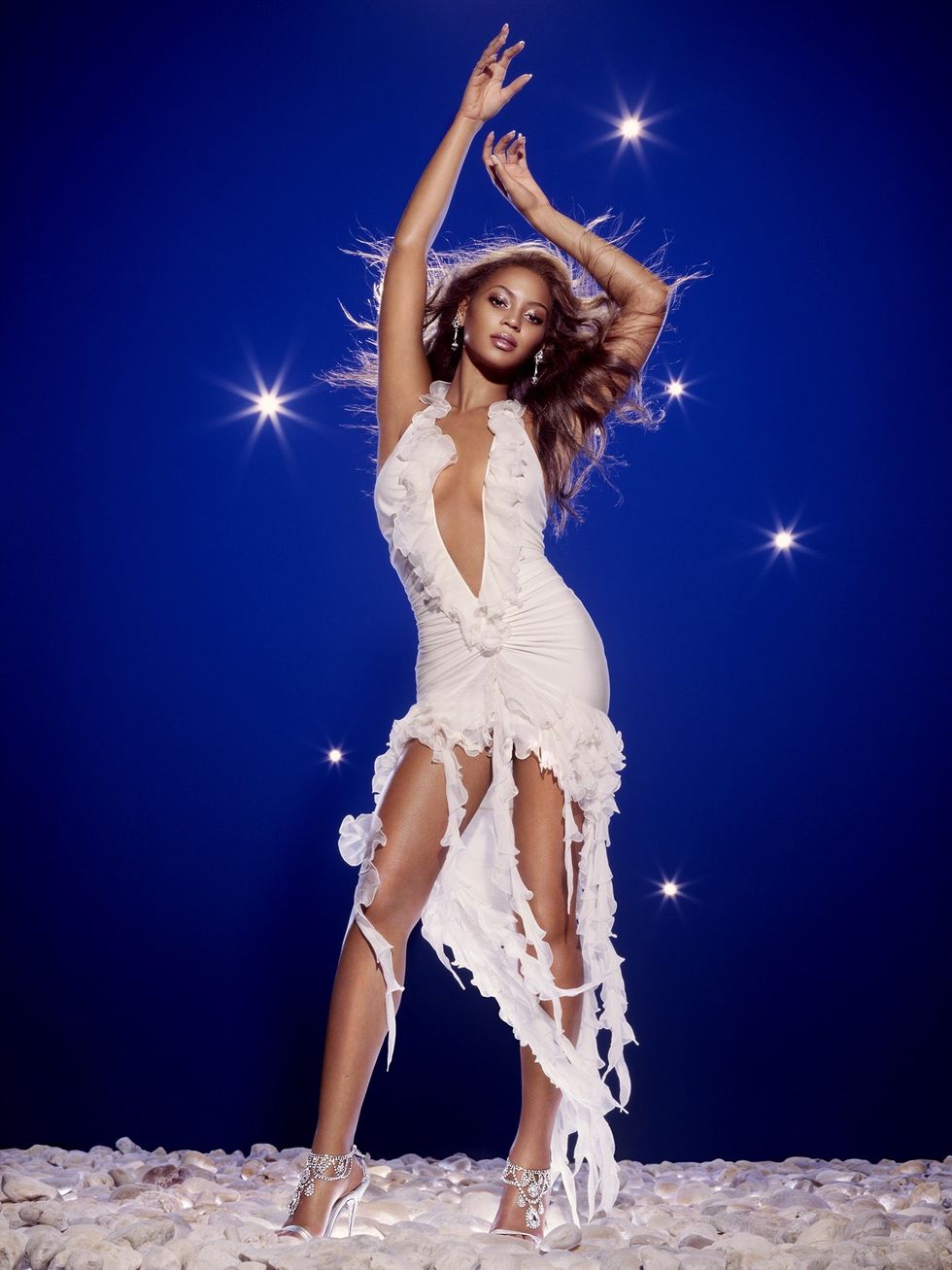
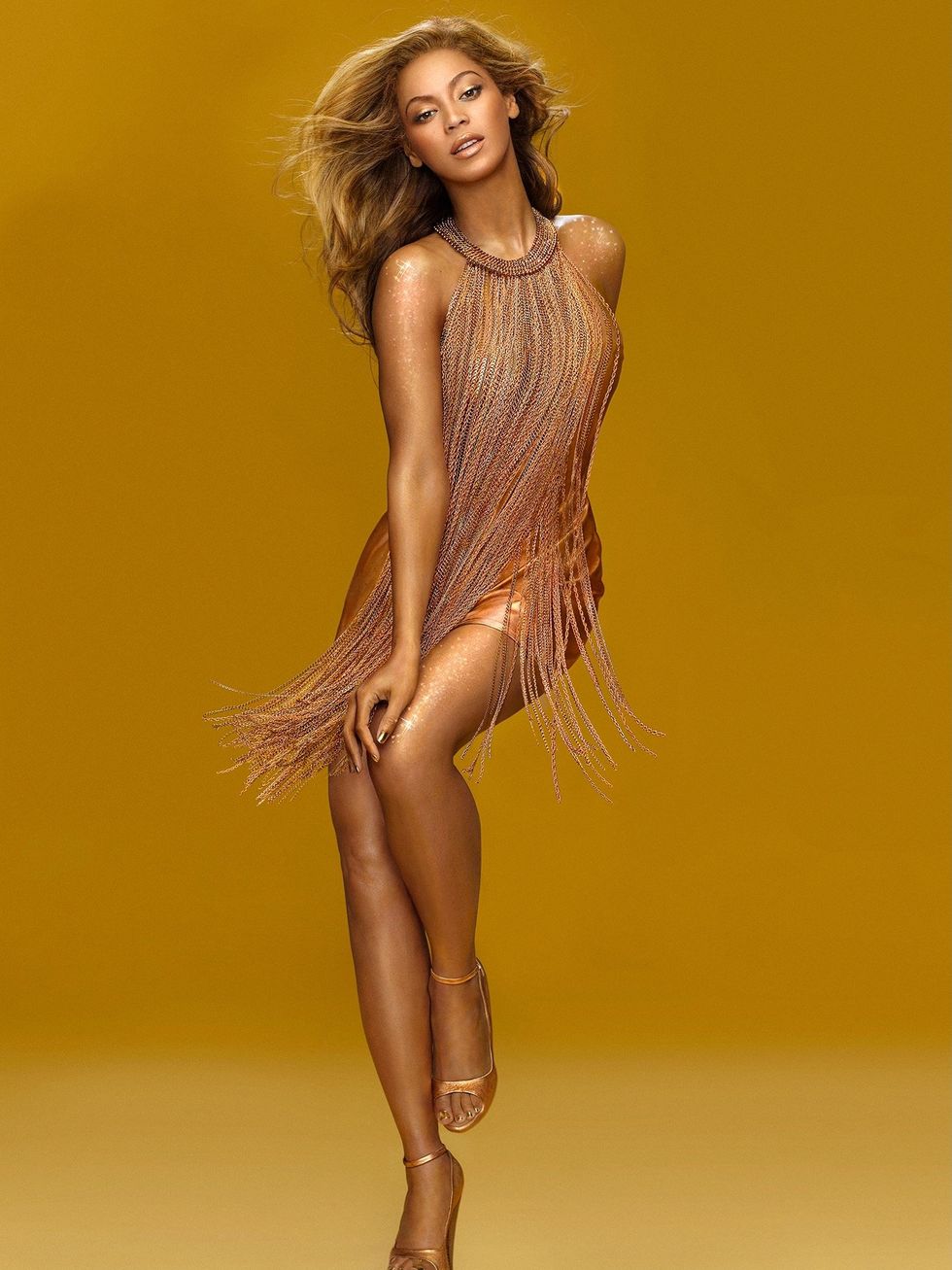

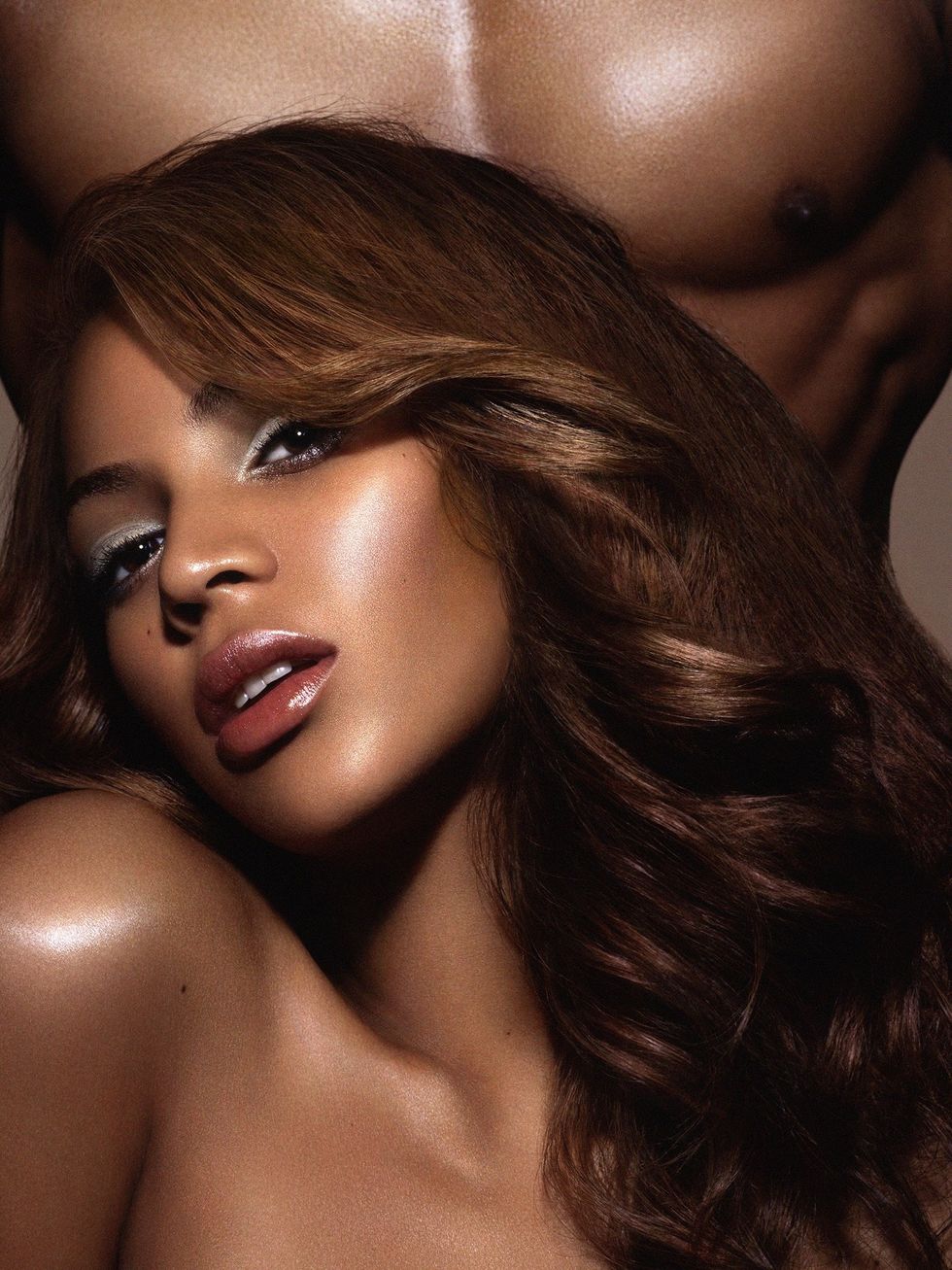
TKTK
